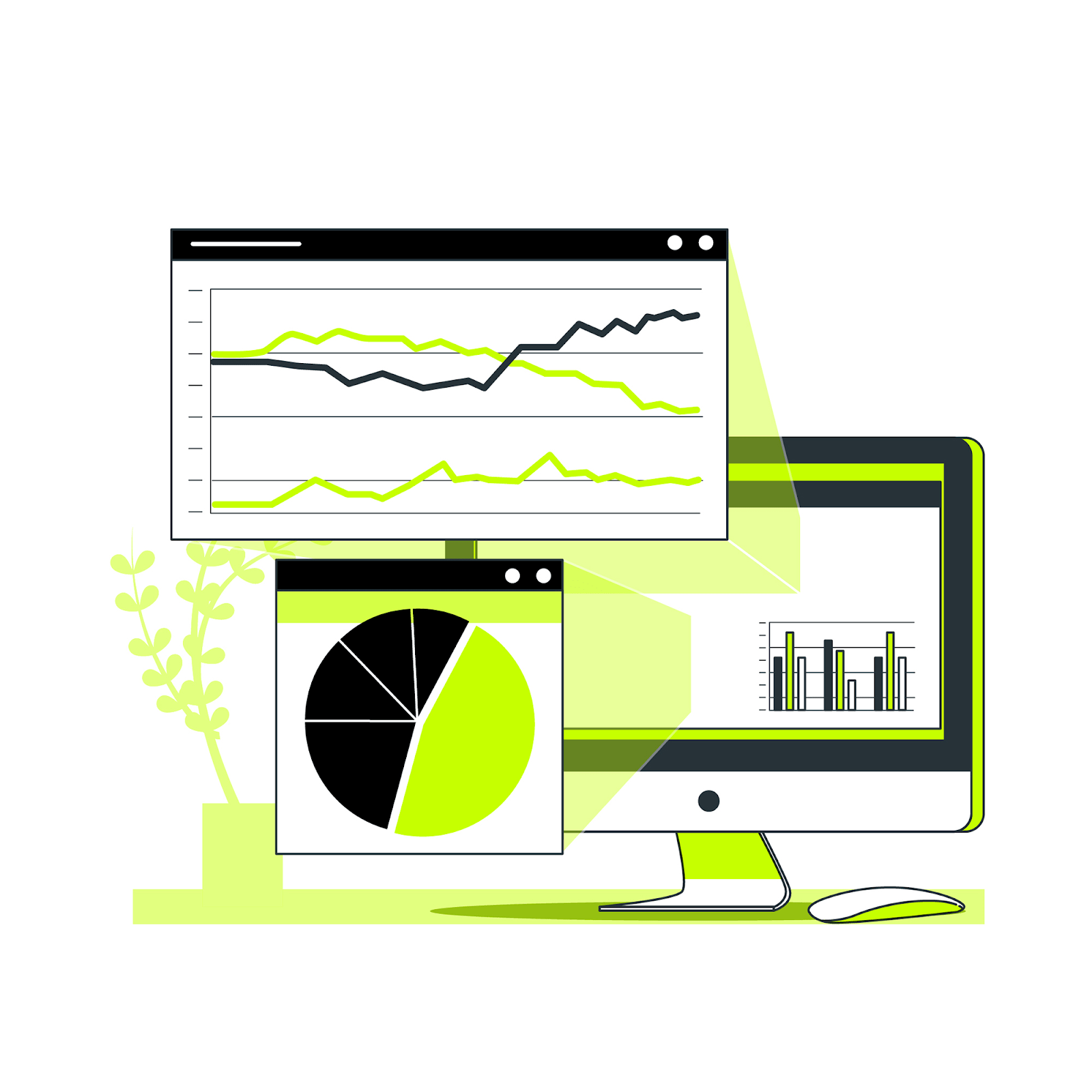Churn rate and retention rate are two sides of the same coin. These rates are important for businesses to understand...

What is Digital Customer Experience?
Digital Experience Platforms (DXP) make way to collect fast, multi-faceted, and high-stakes digital experiences data. A digital experience manager can use the data on digital engagement and digital experiences from a DXP or other behavioral analytics software to fine-tune a brand’s customer experience. These tools offer more frequent and complex data than offline customer experience data. With these things in mind, the question begs: how can companies reap the full potential of a great digital experience?


Improve User Experience With Heatmaps
Find out which items attract attention and which ones are most important to your users, on your website with FullSession Heatmap Tracking.
Defining Digital Customer Experience
In essence, Digital Customer Experience is wherever customers take part in a company’s digital engagement efforts through the internet. More technically, Digital Customer Experience (CX) is the aspect of a company’s CX initiative involving digital experience platforms (DXP), such as mobile devices and desktops. It also includes digitally-mediated experiences such as personal applications and social media content. Additionally, Digital CX encompasses digitally-connected environments, such as IoT and voice-activated devices.
A recent study found that 65% of customers are willing to recommend a brand with just their experience on the app or website. Thus, companies must grasp how their digital touchpoints affect their customer perception and loyalty.
Based on the same research, there are three core ingredients to optimize digital engagement: overall digital customer experience. These include:
- Success – Success covers the question: “Did the customer complete their task and achieve their goal?”
- Effort – With Effort, the question, “Was the process smooth and easy?” is answered.
- Emotion – Emotion answers the question, “Did customers feel good after the interaction?”
Digital Customer Experience vs. Customer Experience
Customer Experience (CX) generally encompasses any channel people use to interact with companies. This includes both traditional service platforms and emerging digital experience platforms (DXP).
More specifically, digital customer experience (DCX) covers digital engagement, involving the optimization of front-end and back-office services and processes that benefit customers. Since both traditional and digital customer experience concepts share the same goal, they often overlap to meet customer expectations. Hence, instead of defining what digital customer experience is, it might be clearer to determine what it is not. Therefore, a company can develop a better digital engagement strategy by employing the right DXP or behavioral analytics software, enhancing overall DCX.
Debunking Common Misconceptions
As the marketplace gradually shifts digital, it is only suitable to address the common misconceptions that hinder companies from harnessing the power of Digital Customer Experience. Some of the most remarkable misconceptions are the following:
- Customers care about digital channels more than traditional ones. Regardless of the platform, customers care about accessing companies in the most convenient way possible.
- DCX is all about technology and strategy. When it comes to digital engagement and DXC in general, culture bears more weight than strategy. Thus, integrating the right digital experience platform (DXP) with a customer-centric perspective is what makes successful digital engagement and DCX.
- DCX is all about sales and marketing. Most companies make the mistake of equating good DCX to good sales and marketing. This belief is faulty at best. It may lead to neglecting efforts to provide excellent customer service, loyalty retention, and other digital engagement functions — critical factors to keep a company running in today’s business landscape.
- DCX is limited to digital-only brands. As the world gradually shifts digital, all businesses must go digital to keep up with the changing times irrespective of nature and background. Investing in the right digital experience platform (DXP) and behavioral analytics software support a digital transition can drive revenue and growth in most businesses, digital-only or not.
Importance of a Seamless Digital Customer Experience
Seamless Digital Customer Experience can benefit businesses and customers alike.
From a business lens, employing and maintaining a seamless DCX can be tricky. As customers switch from one channel to another, the complexity of customer journeys cannot get accommodated by a single digital experience platform (DXP). As digital channels continue to increase, providing the best DCX can be challenging. Still, with a visionary digital experience manager, the right digital experience platform (DXP), and the right behavioral analytics software, you can achieve it.
From the lens of a customer, it is a different story. Customers do not mind business technicalities such as online or offline, owned or non-owned, or marketing or e-commerce. As long as companies guide and lead them to their desired goal, they do not care.
Businesses must adopt a customer mindset to provide a seamless DCX. A digital experience manager can develop an optimal omnichannel experience by viewing changing channels and moving between touchpoints as something incidental to user goals and needs. Meaning, customers will recognize the consistent presence of the brand wherever and whenever they engage with it. This allows them to continue with their journey smoothly and conveniently as they please.
Managing the Digital Customer Experience
As established, Customer Experience coincides greatly with Digital Customer Experience. Thus, many companies question the relevance of managing their digital customer experience when focusing on customer experience in general. To shed light on this issue, here are two approaches to consider:
First, companies can focus on the holistic customer lifecycle. This way, companies can give equal attention to digital and traditional customer experiences and complement each other, thereby optimizing both. With this approach, companies can treat DCX as part of the broader, more general customer experience strategy.
Secondly, companies can focus on digital customer experience. Contrary to popular belief, DCX is not simply a subtype of CX. Online and offline customers possess different needs and expectations. Going digital from a traditional channel does not assure the transference of best customer experience practices, thus, focusing on digital customer experience is critical.
Whatever approach a company undertakes, both systems have value. The efficacy of the process now lies in the customers and the company’s digital touchpoint maturity. The bottom line remains; customers have high expectations for the quality of service to which companies must deliver or run the risk of unpleasant customer experience and eventually lose customers.
Best Practices for a Great Digital Customer Experience
FullSession can help a digital experience manager develop an experience management program to help ensure a successful outcome. Among are the best practices to integrate into any eCommerce or SaaS DCX program to keep up with the up-and-coming trends.
Omnichannel Improvements and Standardization
By optimizing and standardizing omnichannel engagements, eCommerce and SaaS companies can level the playing field across their touchpoints. With a consistent omnichannel strategy, customers can easily recognize brands, thereby slowly building up loyalty. It also allows customers to seamlessly transition between using your services on any of their devices.
Adopting a Long-term Mindset
Only still in its nascent phase, digital customer experience management is an ongoing program of improvements. Companies need not hurry results or fall impatient waiting; instead, they must see the potential that developing a solid DCX with the right digital experience platform and behavioral analytics software holds.
Companies must consider that what they are investing for is a framework capable of accommodating future improvements to keep up with the ever-changing world, not a one-time project to complete and move on. This involves constant testing to find areas of your eCommerce or SaaS DCX that can use improvement as well as the areas that are already thriving.
Closing the Loop
A common factor accounting for a company’s downfall is its failure to close the loop. Closed-loop feedback involves following up on customers who have put forward feedback, especially a negative one. Connecting with customers and working towards the alleviation and the rectification of the problem can be pivotal in turning negative experiences into positive ones capable of strengthening customer relationships founded on trust and loyalty. It also provides a great source for potential new features and improvements to a SaaS product.
Not all companies can employ closed-loop feedback; thus, companies must prioritize high-value and recurring customers, and give prompt service to correct the issue.
Transparency
Communicating the companies drives and actions towards the optimization of DCX is something customers would be happy knowing. Harboring transparency gives the customers the impression that companies listen and care. This transparency fosters better and stronger customer relationships and encourages them to offer more feedback to better the company. SaaS companies can utilize a feature roadmap showing how they intend to improve the customer experience of their platform.
Constantly Improving
Companies must regularly conduct digital engagement and DCX evaluations. With the right digital experience platform and behavioral analytics software, a digital experience manager can conduct a streamlined study to know the next steps to undertake.
Aside from platforms and various software, they can use the number of paths their customer uses to pinpoint weak points and persistent feedback areas. With the information gathered, companies can now adjust their systems and implement an action plan to rectify issues that hinder customers from having a seamless digital customer experience.
With the seemingly laborious and difficult job of customer experience management, companies might feel overwhelmed. But, they do not have to. Help is available.
With FullSession, companies can create a more collaborative environment as part of their drive to employ the best practices that ensure a seamless digital customer experience. Moreover, FullSession offers different features to cater to the most pressing needs of a company:
- A Session Recording feature that allows companies to conduct usability testing to monitor customer interaction with their websites.
- An Interactive Heatmap feature that replaces regular website heatmaps to enhance customer interaction and digital engagement.
- Several tools for companies to support and strengthen their predictive analytics strategy.
- An enhanced Customer Feedback feature. This feature allows brands to quantify customer sentiments across online platforms and connect quantitative and qualitative insights for better decision-making.
As the marketplace turns digital, companies must not get lost in technology and remain a customer-centric perspective. With the overwhelming task of delivering only the best services to their customers, companies can turn to FullSession to provide the best customer digital engagement programs and the best overall digital customer experience.





